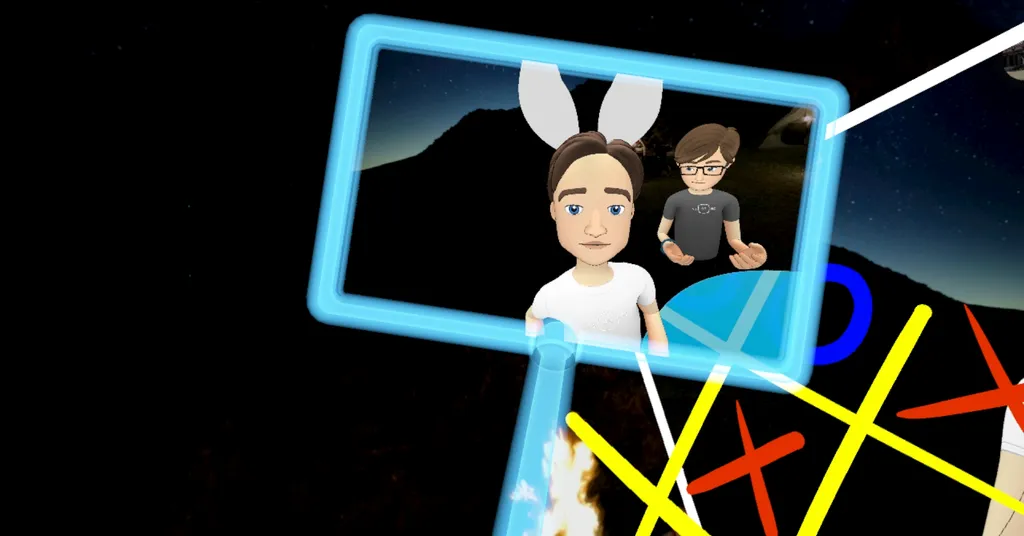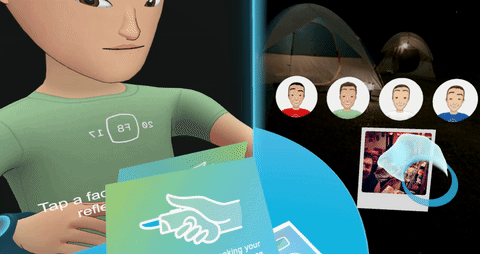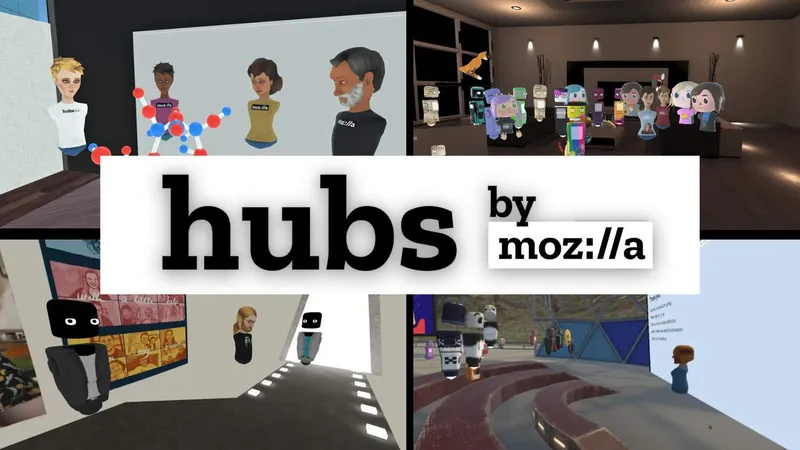I’m standing on a beach at sunset, drawing a sword much in the same way I would with Google’s Tilt Brush. To the side of me, David Jagneaux is writing his name in the air, talking to Ian Hamilton, who is phoning in from outside of VR with the Facebook Messenger app. Meanwhile, I’m talking to my girlfriend, who’s in the same room as me but also looking into VR through her smartphone screen. I take a selfie of the scene with one hand as I draw a blue mustache on my face with the other.
It’s all a little crazy, and wildly exciting.
Facebook Spaces is the official name of the social networking giant’s first full social VR app, which launched today as a free (and very early) beta for the Oculus Rift. If you have a Rift, Touch, and a Facebook account, all you need to do is head to the Oculus Store and download it. After those few simple steps, hey presto, you’re looking at the future of mixed reality.
Though Facebook’s Oculus has its own suite of social features including avatar creation and friend finding, Spaces does all of that from scratch with a specific purpose in mind; connect people from across the world, give them the feeling that they’re really meeting up together like in real life, and then do things that they could never do within the confines of real reality. As an early app, it shows huge potential of reaching that vision in the months and years to come. In fact, it already has an impressive amount of features too, even if the inevitable bugs hold you back from fully utilizing them.
Spaces started me off in a peaceful campfire scene where I could make my avatar. You can lay the foundations of your appearance by selecting photos from your Facebook account to start you off, and then fine tune with a wide array of assets. I quickly created a rough approximation of myself with the aid of a virtual mirror that displayed my virtual, cartoonish doppelganger. I was talking to someone in my real room as I customized my look, and noticed surprisingly accurate lip syncing as I chatted away.
Surrounding me as I closed the appearances tabs were various items that have been created with Spaces’ pencil tool, which lays on a virtual table in front of me. I can either pick them up or start drawing with the same ease and intuition you’ll see in Tilt Brush, or open a library of pre-created objects like swords and flags. I’m still playing around with these tools as I use my free hand to open up my Friends list from a console on the table.
Ironically, I’m fortunate enough to have a relatively small Facebook friends list, so navigating through to find David was almost instantaneous, but he had a much larger list and struggled to locate both myself and Ian on his end. When I invite David to join me, he has to open the friends tab, find me, and then request to join me.
When he appears around my campfire, I’m overjoyed. Me and David have hung out in VR many times, be it in space ships or other social networks, but I’m excited to push the boundaries of Spaces as he pops into view. Unfortunately there’s little to be pushed, as either one of us would find the other’s avatar to have totally frozen across multiple attempts to join up together. When David calls Ian, I can’t see or hear his video feed, and the same goes for him with my call. It’s a simple bug that I’m sure will get working very soon, and I still had voice chat to share laughter over as I scribbled over David’s face too.
Even with these issues, Facebook Spaces started to make a social network footprint in seconds. People are already sharing screencaps of my time talking to them in VR on Twitter feeds.
Now that’s what I call mixed reality. @Hero_Kvatch @David_Jagneaux Facebook’s Spaces to Messenger call. @UploadVR pic.twitter.com/4HU51Kmm1l
— Ian Hamilton (@hmltn) April 18, 2017
As slight as it may sound, navigating around Spaces was my favorite part of the experience so far. With a surprising breadth of options, I’d assumed it would take me days to get used to the interface, but I was flying through it with ease in minutes. Friends, Tools, Objects, Media and more were all on the console in front of me. Sharing an image was as simple as scrolling through my Media feed, grabbing a photo like a postcard, and then tossing it into the middle of the table. Touching my wrist would bring up options menu where I could sign out, and surrender my headset to my girlfriend, who immediately tried to call her family in VR (they’ll do it in an hour).
Of course, many of these features are available in long-established VR apps like Altspace, Rec Room, and BigScreen, and the teams behind those experiences have laid the groundwork connecting the relatively small VR installed base as it currently stands. Facebook, though, could connect the 1.2 billion people already using its Messenger app to anyone wearing a Rift as it works toward one day getting everyone inside its headsets.
And that’s really the major point here. Facebook Spaces is something I’m excited to start digging deeper into not just with my friends in VR but also my friends and family outside of VR. Every time I call my Dad (which I’ll be doing as soon as this post wraps up), I’m going to be showing him the future through a window in the palm of his hand. It’s early days but Facebook already seems to be getting a grasp on and taming the unwieldy possibilities of VR with friends and family. Dare we say it, Facebook might have created the killer app in the process.





























